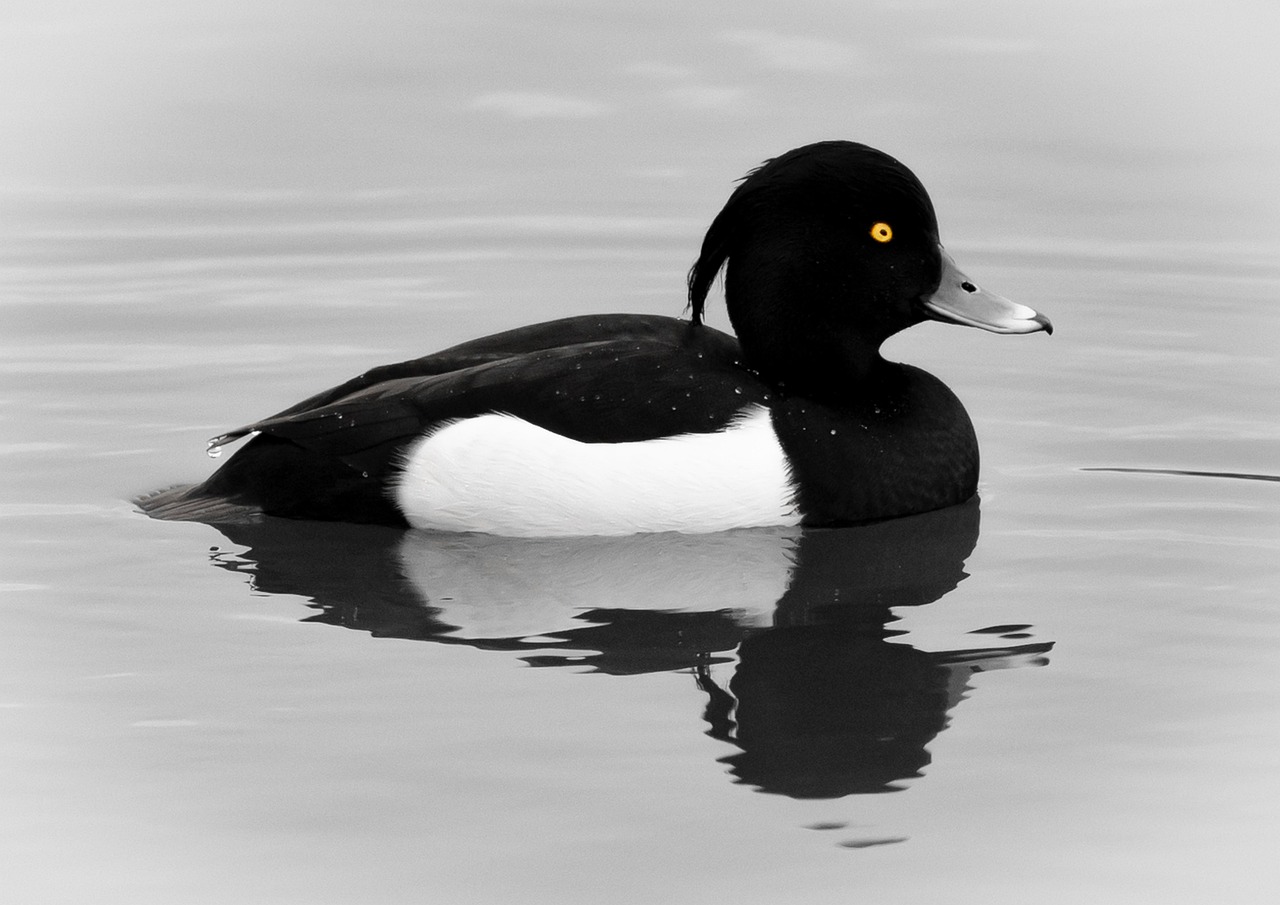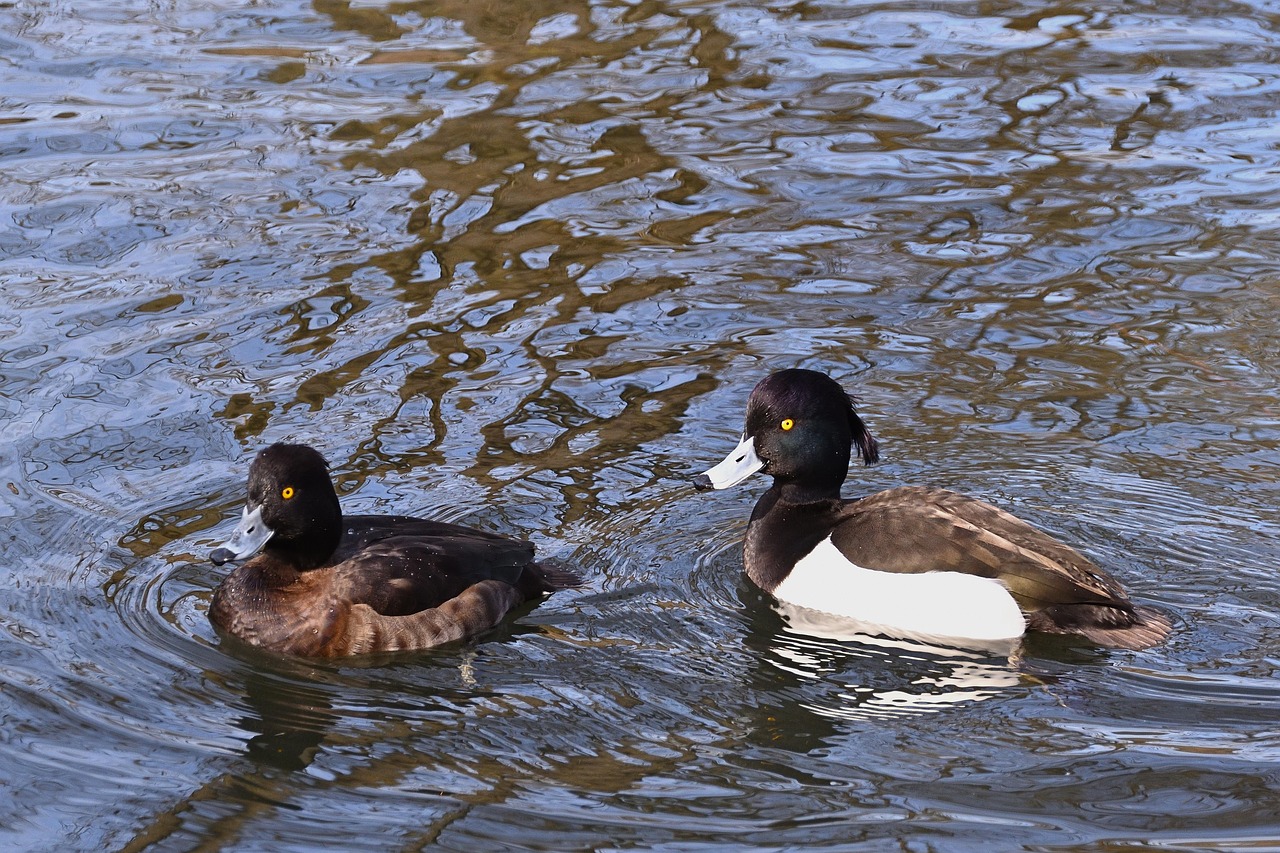Tufted Duck (Vigg)


Characteristics:
The Tufted Duck is a small diving duck (length 40–47 cm) with a compact body, rounded head, and short neck.
- Male: Striking black-and-white plumage with a glossy black head and a distinct tuft of feathers on the back of the head. The sides and belly are white, while the back and breast are black.
- Female: Dark brown overall with a paler underside and often a shorter, less distinct tuft.
Both sexes have bright yellow eyes and a greyish-blue bill with a black tip. A broad white wing band is visible in flight.
Habitat:
The Tufted Duck breeds across most of Sweden, from Skåne in the south to southern Lapland, but is most common in southern and central regions. It prefers lakes, ponds, archipelagos, and sheltered coastal bays with rich vegetation and ample food.
Behaviour:
The Tufted Duck is a true diving duck, feeding underwater and often seen in flocks. It is highly social, forming large groups outside the breeding season. It dives swiftly and efficiently but moves clumsily on land.
Diet:
The Tufted Duck feeds mainly on molluscs, snails, aquatic insects, larvae, and crustaceans, but also eats seeds and aquatic plants. During winter, shellfish and small crustaceans form the bulk of its diet.
Reproduction:
Breeding takes place in May–June. The female builds a well-hidden nest near water, lined with grass and down. She lays 8–10 eggs, which she incubates for about 25 days. The ducklings are precocial and follow the mother to the water shortly after hatching.
Migration:
The Tufted Duck is a migratory species, though many individuals overwinter in southern Sweden or along the North Sea and western Europe.
Distribution:
Found throughout northern Eurasia, and in Sweden it is common across most regions, especially near coastal lakes and archipelagos.
Hunting:
The Tufted Duck is a game species in Sweden and may be hunted from 21 aug to 31 January in most regions. It is commonly hunted during autumn waterfowl hunts along lakes, coastal areas, and during migration periods.
Firearm class (Sweden):
Hunting is done with a shotgun, typically using pellet size no. 4–6.
Think for the hunting exam:
- Small diving duck with yellow eyes and a tufted crest (male).
- Common on lakes, archipelagos, and coastal bays.
- Feeds on snails, crustaceans, and insect larvae.
- Highly social, forms large flocks.
- Breeds close to water.
- Hunted with shotgun during autumn and winter.
